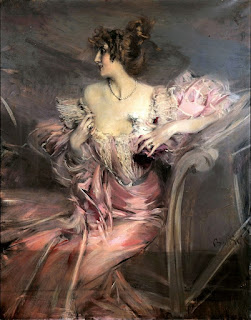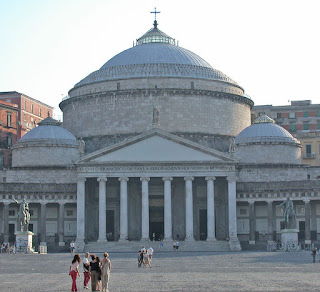Singer who moved the composer Verdi to tears
 |
| Antonio Cotogni's voice was admired by the composer Giuseppe Verdi |
Cotogni’s fine baritone voice was particularly admired by the composer Giuseppe Verdi and music journalists wrote reviews full of superlatives after his performances.
Cotogni studied music theory and singing from an early age and began singing in churches and at summer music festivals outside the city.
He made his opera debut in 1852 at Rome’s Teatro Metastasio as Belcore in Donizetti's L’elisir d’amore.
After that he did not sing in public for a while, concentrating instead on building up his repertoire.
After singing in various Italian cities outside Rome he was signed up to sing at Rome’s Teatro Argentina in 1857 in Lucia di Lammermoor and Gemma di Vergy, also by Donizetti. Later that year he performed in Verdi's I due Foscari and Sanelli's Luisa Strozzi at Teatro Rossini in Turin. He met the soprano Maria Ballerini there and married her the following year.
His major breakthrough came in 1858 when he was asked to take the place of the famous baritone Felice Varesi in Nice.
Varesi’s fans felt that Cotogni, who was virtually unknown, should not have been chosen to replace the popular singer.
 |
| Cotogni in the role of Enrico in Donizetti's Lucia di Lammermoor |
The audience fell silent as he sang his opening aria and gave him thunderous applause afterwards demanding an encore. His performance revealed him to be a master of his art and Antonio became one of his signature roles.
Cotogni made his debut at La Scala in Milan in 1860 and after overcoming his initial nerves, he won over the notoriously critical audience.
He appeared at the leading opera houses in Madrid, Lisbon, Paris, Moscow and Saint Petersburg and became particularly popular with London audiences, performing at the Royal Opera House regularly from 1867 to 1889.
The famous baritone gave his last operatic stage performance in 1894 in Donizetti’s Don Pasquale in Saint Petersburg.
Cotogni became a celebrated vocal teacher in retirement, teaching first at the Saint Petersburg Conservatory and then at the Accademia di Santa Cecilia in Rome.
He taught dozens of celebrated singers during his retirement between 1894 and 1918, the year in which he died in Rome just before the armistice ended World War I.
Cotogni sang most of the major Verdi baritone roles and the composer himself praised the beauty and strength of his voice. Verdi heard him privately in several of the key pieces from Don Carlo and was moved to tears by his singing of Rodrigo’s death scene. Verdi had his own nickname for Cotogni, calling him mio ignoratino - my little ignoramus - which he used not in an insulting way but in teasing the singer for his unfailing modesty, humility and deference.
Cotogni was an exceptional teacher and was able to pass on to his pupils what Verdi had said to him about the arias and elements of the operas that had been changed in rehearsal.
 |
| Cotogni (second row, middle) with his class at the St Cecilia Academy. Beniamino Gigli is on the right at the back. |
Ricci eventually compiled a four-part collection, Variazioni-cadenze tradizioni per canto, which recorded this information for posterity.
At the age of 77 Cotogni recorded a duet with a much younger tenor for the gramophone. Although his voice was not the same as when it had moved Verdi to tears, it is a permanent reminder of the singer who had entranced audience throughout Europe for 40 years. It is also the oldest voice ever recorded for the gramophone as Cotogni had been born in 1831.
 |
| Via dei Genovesi in Trastevere |
Travel tip:
Antonio Cotogni was born at number 13 Via dei Genovesi in the Trastevere district of Rome and there is a commemorative plaque on the house. Trastevere, once a working-class part of the city, is now one of Rome's most fashionable neighbourhoods, certainly among young professionals, who are attracted by its pretty cobbled streets and the wealth of inexpensive but chic restaurants.
 |
| The Conservatory of Santa Cecilia in Via dei Greci is part of the Academy |
Travel tip:
The St Cecilia Academy - Accademia Nazionale di Santa Cecilia - where Cotogni taught singing, is one of the oldest musical academies in the world. It was founded in Rome by Pope Sixtus V in 1585 at the Church of Santa Maria ad Martires, better known as the Pantheon. Over the centuries, many famous composers and musicians have been members of the Academy, which lists opera singers Beniamino Gigli and Cecilia Bartoli among its alumni. Since 2005 the Academy’s headquarters have been at the Parco della Musica in Rome, which was designed by the architect Renzo Piano.
More reading:
The death of Giuseppe Verdi - how Italy mourned the loss of a national icon
The brief but sparkling career of 19th century soprano Marietta Piccolomini
Antonio Scotti - the Neapolitan baritone who sang for 35 seasons at The Met
Also on this day:
1464: The death of Cosimo de' Medici, founder of a dynasty
1776: The birth of Francesca Scanagatta, the girl who pretended to be a man to join the Austrian army
Home
More reading:
The death of Giuseppe Verdi - how Italy mourned the loss of a national icon
The brief but sparkling career of 19th century soprano Marietta Piccolomini
Antonio Scotti - the Neapolitan baritone who sang for 35 seasons at The Met
Also on this day:
1464: The death of Cosimo de' Medici, founder of a dynasty
1776: The birth of Francesca Scanagatta, the girl who pretended to be a man to join the Austrian army
Home















